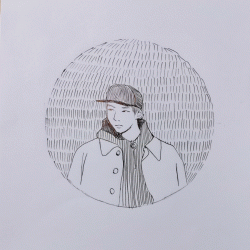BOUNCING BALL
14/12/2020
I felt nervous about this because a lot of physics must come into play, be it the angles the ball bounces at or the speed.
After the lecture, I was more informed on what had to be done, and drew a plan for the bouncing ball that includes ramps in the middle for it to bounce off of.

With that approved, I drew the ball in separate frames and did a line test.
From this, I could see that the speed of the ball changed too drastically as soon as it hit the wall and bounced onto the floor, and a lot of adjustments had to be made. This wasn’t an all-too enjoyable process for me, though I understand the importance of monitoring and editing in a field such as this.

This is the corrected animation, done by removing a few frames to adjust the speed.

After that, I created a round, piggybank character to bounce around following the guide I did of the bouncing ball, and I quite like a comically aspect of the end result.

If I could keep working on it, I would maybe add some coins falling out of the piggybank after it hits a surface.
EASE IN AND EASE OUT
15/12/2020
When asked to create an animation where the character changes their pose three times, I immediately thought of a conductor. There is a very intricate way in which they move and control the music using specific gestures, and I wanted to portray these smooth hand motions through animation.
I would soon come to regret this when I realised how many hands I had to draw in total, though it was too far to look back, so I went through with it and created the three key poses, which are representative of the first, second, and third, beat in a 3/4 time signature.



Because a conductor moved from one beat to another straightaway, I didn’t have to photograph one frame many times to make the character pause to “pose”. Instead, he has to move smoothly from point to another.
This was the result.
What I thought would be interesting and suggested to me was to add music in the background to make it seem as though my conductor was actually conducting something.
I decided to make him conduct Chopin’s Nocturne Op. 9 No. 2, a musical piece with 3/4 time signature.
Through this, I also realised that in a musical setting, the rhythm is manipulated my conductors and performers in order to make the music more interesting and emote the feelings intended by the composer. This meant that my conductor’s gestures, though edited to be on beat with the music, did not match the playing of the orchestra.
To fix this, I had to edit the animation so that some frames last longer in order to make up for the orchestra quickening and slowing down at some parts.
This was the result
I quite like how it turned out, especially the hands which I found difficult to draw. However, I still felt that the animation wasn’t very smooth, considering that the topic was ease in and ease out .
